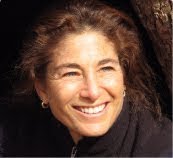About 2,600 years ago, when Siddhartha Gautama (the soon-to-be Buddha) sat down under the bodhi tree, his resolve was to realize his true nature.
Siddhartha had a profound interest in truth. The questions, “Who am I?” and “What is reality?” impelled him to look even more deeply within and shine a light on his own awareness.
As a Zen story reminds us, this kind of inquiry is not an analytic or theoretical exploration. One day a novice asks the abbot of the monastery, “What happens after we die?” The venerable old monk responds, “I don’t know.” Disappointed, the novice says, “But I thought you were a Zen monk.” “I am, but not a dead one!” The most powerful questions direct our attention to this very moment.
To practice this same sort of self-inquiry inspired by the Buddha, we can quiet the mind and ask, “Who am I?” or “Who is aware right now?” or “Who is listening?” Then we can look gently back into awareness to see what is true. Ultimately, we find that there is no way for the mind to answer the question—there is no “thing” to actually see or feel.
The point is simply to look, then to let go into the no-thing-ness that is here.
The question “Who am I?” is meant to dissolve the sense of a searcher.
Yet, as you might discover, this isn’t what happens right away. First, we find all sorts of things we think we are, all our patterns of emotions and thoughts, our memories, the stories about who we take ourselves to be.
Our attention keeps fixating on elements of the foreground. Maybe we’ve contacted a feeling. But we keep inquiring. “Who is feeling that?” we ask, or “Who is aware of this?” And the more we ask, the less we find to land on. Eventually, the questions bring us into silence—there are no more backward steps. We can’t answer.
The discovery of no-thing, according to Tibetan Buddhist teachings, is “the supreme seeing.” It reveals the first basic quality of awareness: emptiness or openness. Awareness is devoid of any form, of any center or boundary, of any owner or inherent self, of any solidity.
Yet, our investigation also reveals that while empty of “thingness,” awareness is alive with wakefulness—a luminosity of continual knowing.
Rumi puts it this way: “You are gazing at the light with its own ageless eyes.” Sounds, shapes, colors and sensations are spontaneously recognized. The entire river of experience is received and known by awareness. This is the second basic quality of awareness: awakeness or cognizance.
If we let go and rest in this wakeful openness, we discover how awareness relates to form: When anything comes to mind—a person, situation, emotion—the spontaneous response is warmth or tenderness. This is the third quality of awareness: the expression of unconditional love or compassion. Tibetan Buddhists call this the “unconfined capacity of awareness,” and it includes joy, appreciation, and the many other qualities of heart.
When Siddhartha looked into his own mind, he realized the beauty and goodness of his essential nature and was free.The three fundamental qualities of our being—openness/emptiness, wakefulness, and love—are always here.
Gradually, we too can realize that this wakeful, tender awareness is more truly who we are than any story we’ve been generating about ourselves. Rather than a human on a spiritual path, we are spirit discovering itself through a human incarnation. As we come to understand and trust this, our life fills with increasing grace.
Adapted from True Refuge (2013)
Enjoy this talk on the Blessings of Awakening
For more information visit: www.tarabrach.com
Like elephant Buddhadharma on Facebook.
Ed: Brianna Bemel






Read 2 comments and reply